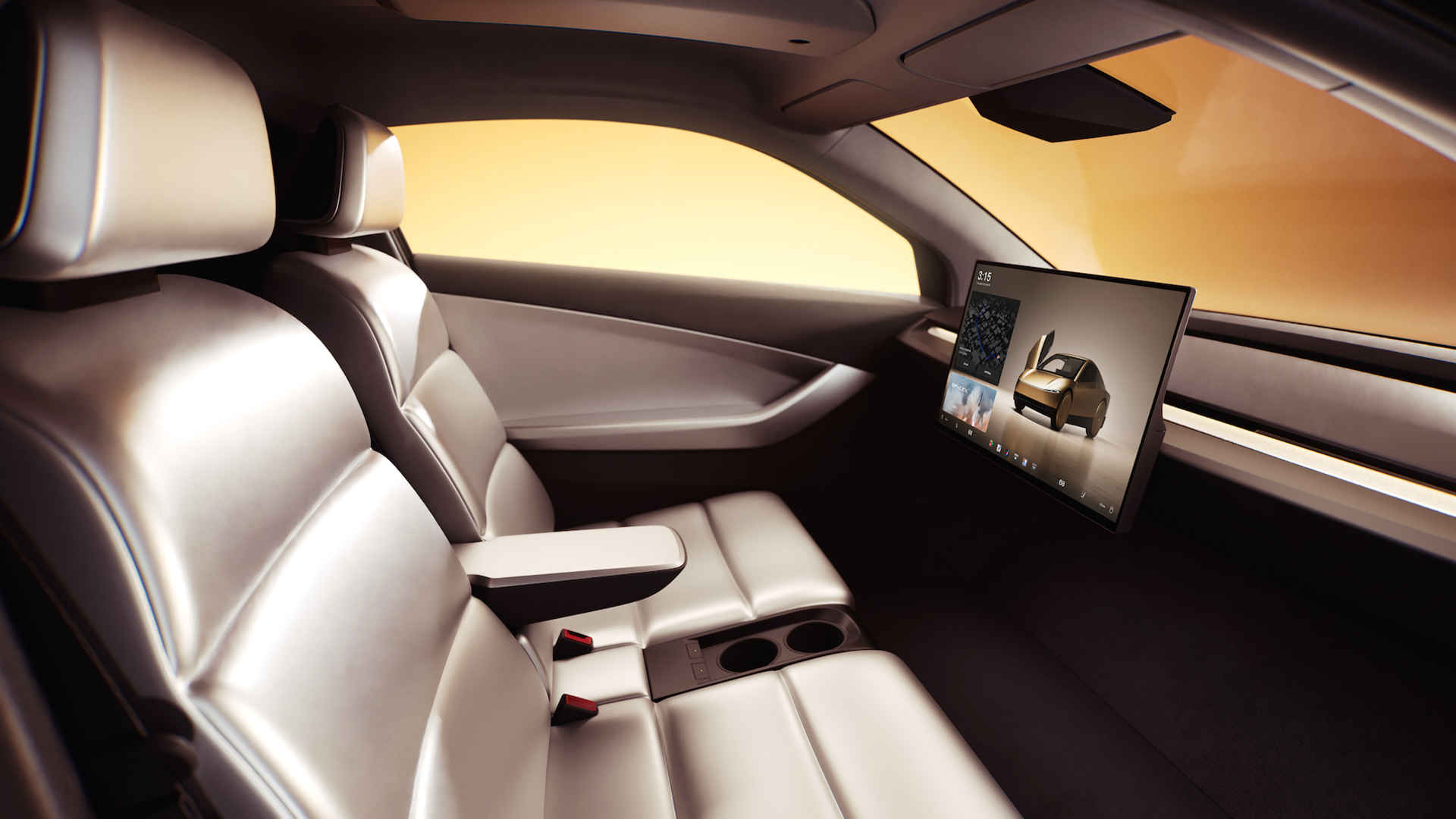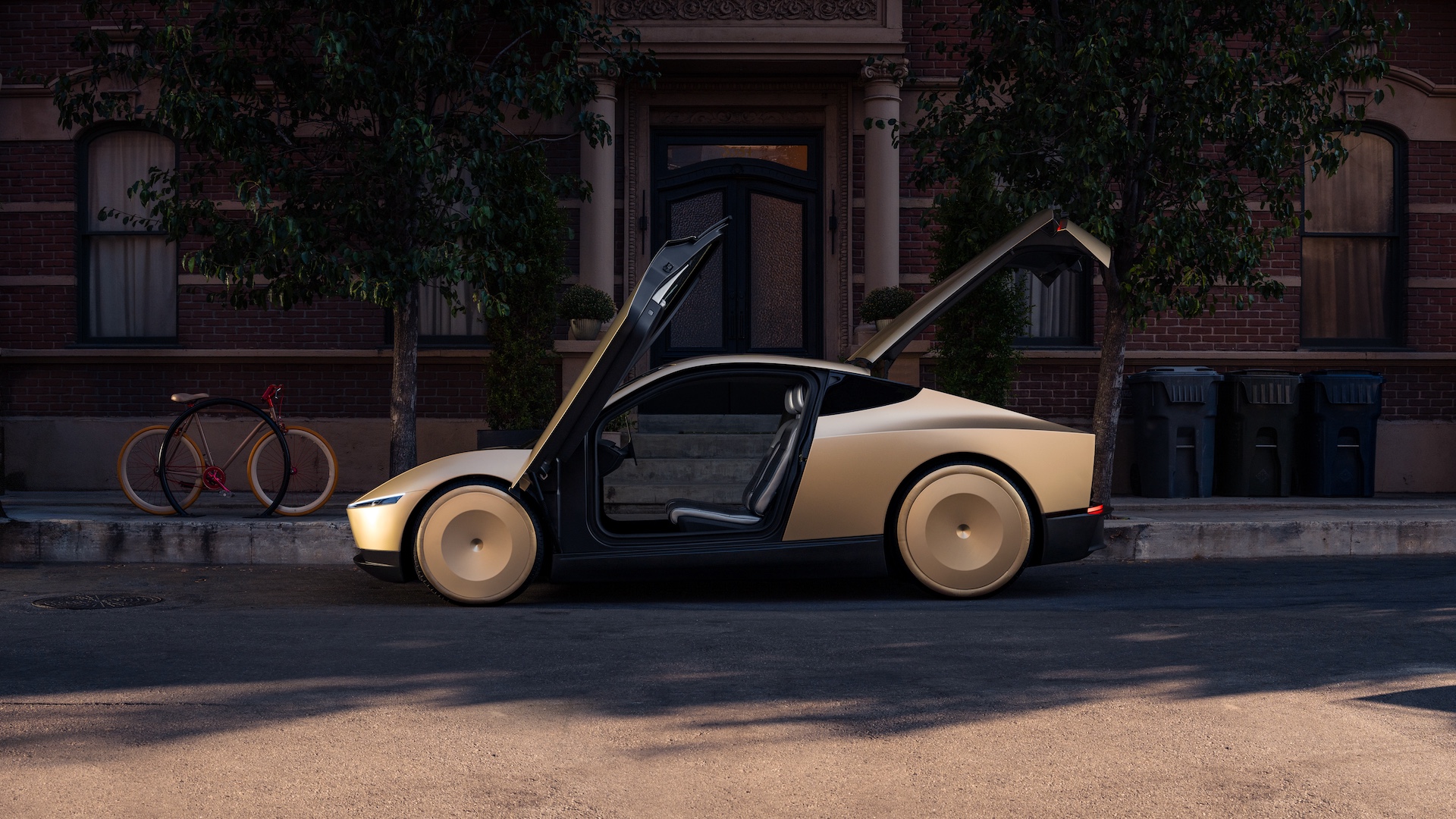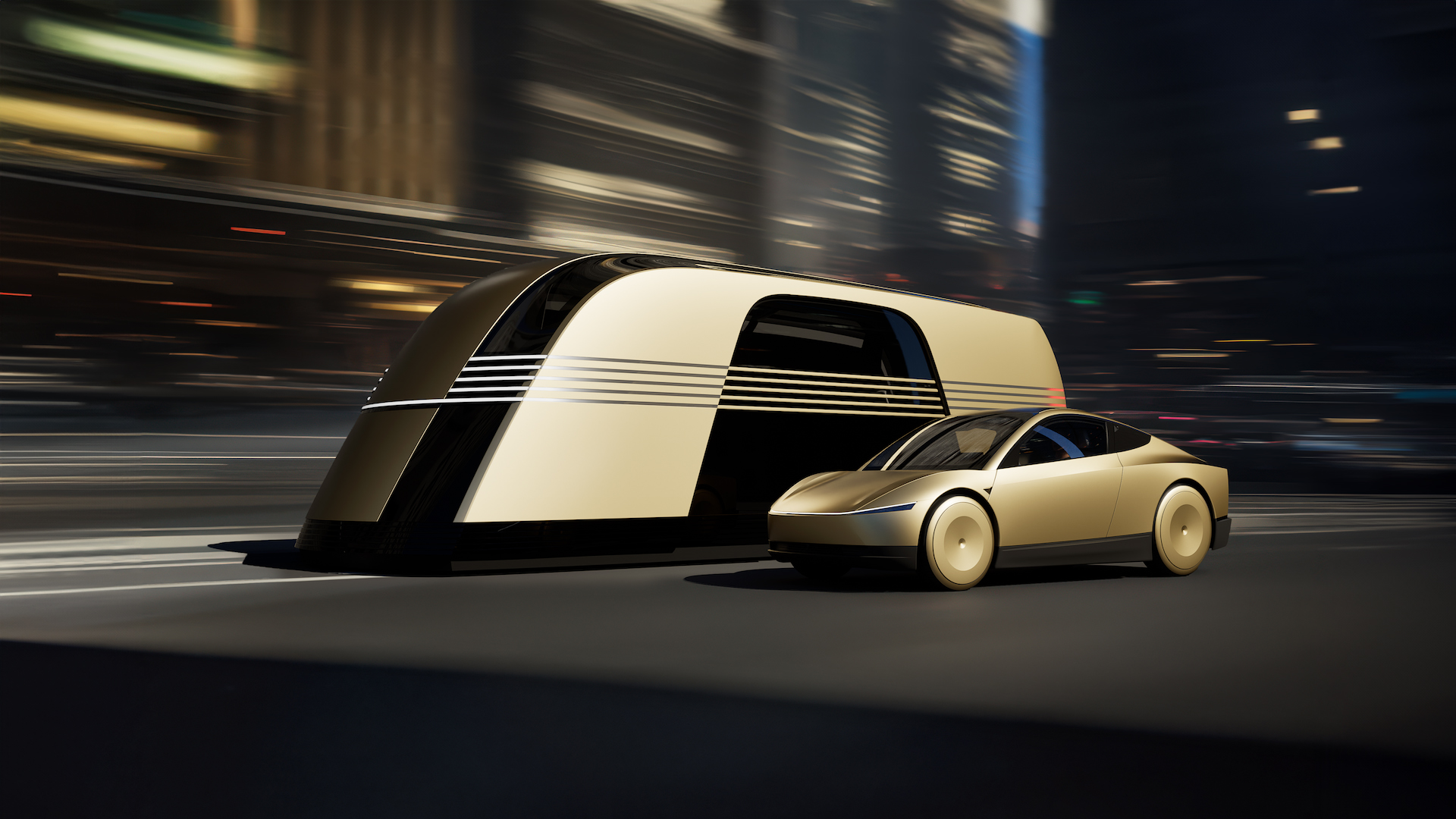Tesla's new Cybercab and futuristic 20-seat Robovan show it's lost its grip on reality
Details remain scarce, but at least the event actually happened

Dancing humanoid robots, a Hollywood movie set and plenty of impromptu whooping – it could only mean one thing: Elon Musk finally held the robotaxi reveal he has been promising for years.
Staged in a sprawling "20-30 acre" Warner Brothers facility in California, the unveiling saw Musk arrive in what he predominantly referred to as 'Cybercab', although he did have a tendency to muddle that up with robotaxi on several occasions.
Sporting a demure gold paint job, the scissor-door saloon looked like the Cybertruck and Model S had spawned freakishly futuristic offspring, with LED headlights, laser projections on the road ahead and a distinct lack of steering wheel or pedals setting it apart from the rest of the Tesla range.
Musk demonstrated its abilities as he hopped inside one of his Cybercabs and took an awkward, trundling meander around the movie set to bursts of applause from his adoring fans. Occasionally it would stop for staged cyclists to pass, other times it would hesitate at junctions.

Once up on stage, Musk was characteristically light on details, stating that he had "50 autonomous cars" roving around the Warner Bros. lot, including Model Y vehicles set to an unsupervised autonomous driving mode.
After stating that traffic today “sucked” and that autonomous vehicles could be anywhere between 10-20 safer than humans, Musk again reiterated his vision of "personalised mass transport", which he suggested would be cheaper, safer and more convenient for everyone.
More importantly, it would give humanity back the time 'wasted' driving. Although Musk then joked that humanity would spend that time on their smartphones.
Get daily insight, inspiration and deals in your inbox
Sign up for breaking news, reviews, opinion, top tech deals, and more.
In terms of technology powering the vehicle, Tesla remained tight-lipped, with anyone tuning into the live stream of the event forced to pick out details and join the dots.

There was no sign of LiDar on any of the Robocab’s used in the demonstration, suggesting they relied solely on high-definition cameras to navigate the various, very controlled obstacles.
The Verge reported that the company was mapping the Warner Bros area in advance of the reveal, despite the company stating that it doesn’t rely on high-definition mapping for its Auto-Pilot and Full Self-Driving systems.
Musk did reveal that the Cybercab will go on sale and it will cost "less than $30,000", which is around £23,000 / AU$44,500, while he expects production for the vehicle to begin in 2026. However, that figure felt like it was plucked out of the air.
There was mention of inductive charging, with the Cybercab lacking any form of plug and relying solely on inductive plates to top up batteries. During one cutaway video, we also saw a team of robots vacuuming the interior of Tesla's autonomous vehicle and polishing the surfaces.
Any form of timeline is similarly vague and optimistic, as Musk predicts (or should that be hopes?) that both Texas and California will allow the company to operate Unsupervised Full-Self driving in those states next year, despite the fact that improvements in the company’s current SAE Level 2 supervised system have been marginal.
Analysis: Tesla is behind the times

Dan O'Dowd, founder of safety advocacy group The Dawn Project, spoke out after the Tesla We, Robot event, stating: "Tesla is not a player in the robotaxi market because they are prohibited from running on public roads. Tesla is limited to yawn-inducing demonstrations in Hollywood studios while its competitors’ robotaxis transport 100,000 paying customers around major American cities every week."
This firmly hits the nail on the head, because this is the major issue facing Tesla’s autonomous driving technology.
Despite the company repeatedly over-egging its Auto-Pilot and Full Self-Driving capabilities, it is still only able to travel 70-odd miles before the systems disengage and require a human driver to take over for safety reasons, according to the community run Tesla FSD tracker.
Compare this to Waymo's technology, which manages over 17,000 miles before any sort of disengagement. As a result, the company is rapidly expanding its operations across North America.

Rather than reveal the affordable EV that many Tesla and non-Tesla fans have been crying out for, Musk chose to wow the crowds with what he called the 'Robovan' – a fully autonomous, 20-seater transportation pod that looked like it had been lifted from a science fiction film.
There were also bold statements about his Optimus humanoid robots, which Musk claimed could be mass produced and then sold for $20,000 (around £15,000 / AU$30,000), going on to suggest they would be "the biggest product ever, of any kind".
Alas, as the cameras panned around to the humanoid robots supposedly tending the bar during the after party, all the dressed up props could do was stare into the abyss and wave at the crowd’s general direction.
A fitting metaphor for a once mighty company that feels as if it has lost its grip on reality.
You might also like...

Leon has been navigating a world where automotive and tech collide for almost 20 years, reporting on everything from in-car entertainment to robotised manufacturing plants. Currently, EVs are the focus of his attentions, but give it a few years and it will be electric vertical take-off and landing craft. Outside of work hours, he can be found tinkering with distinctly analogue motorcycles, because electric motors are no replacement for an old Honda inline four.